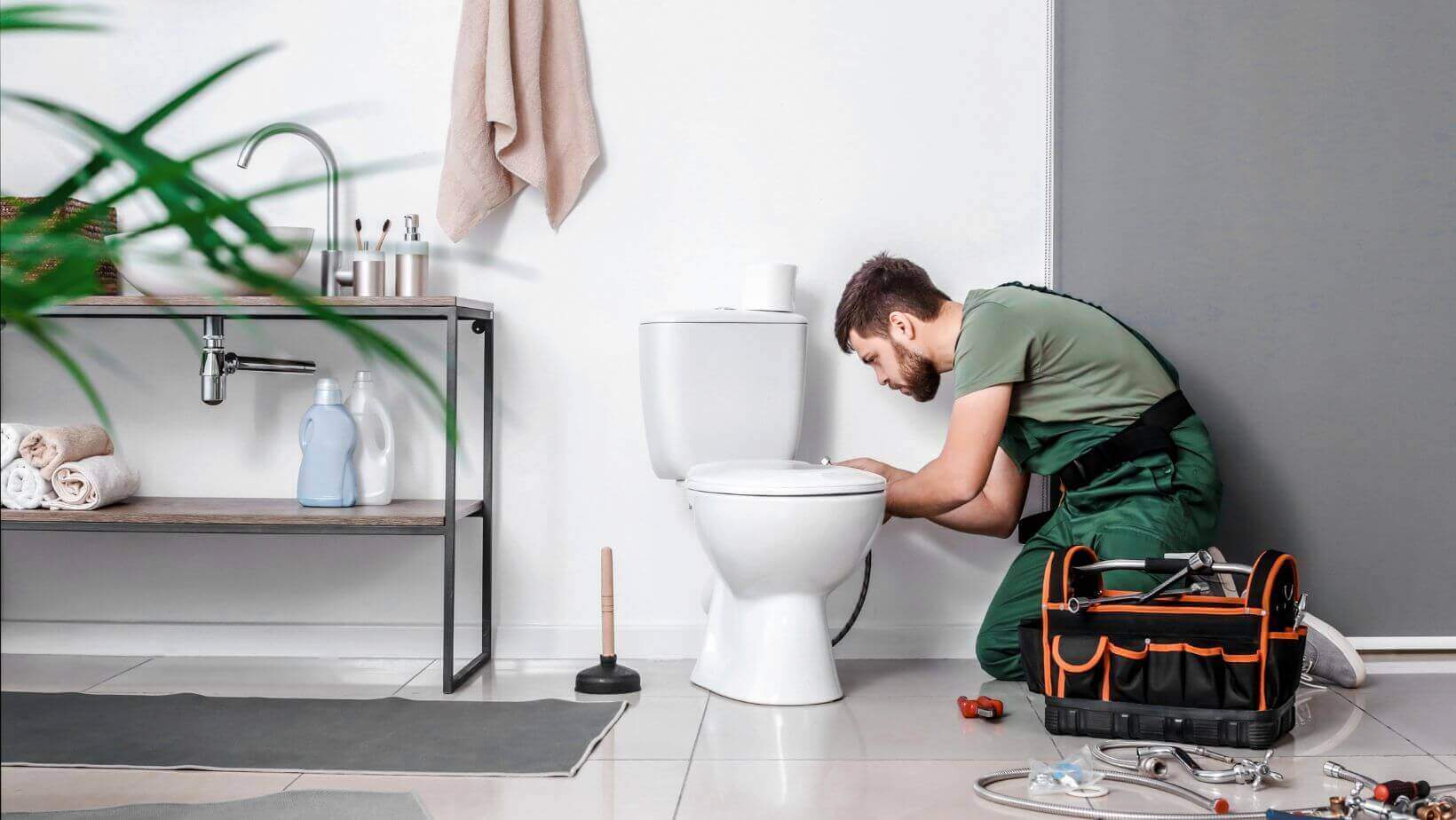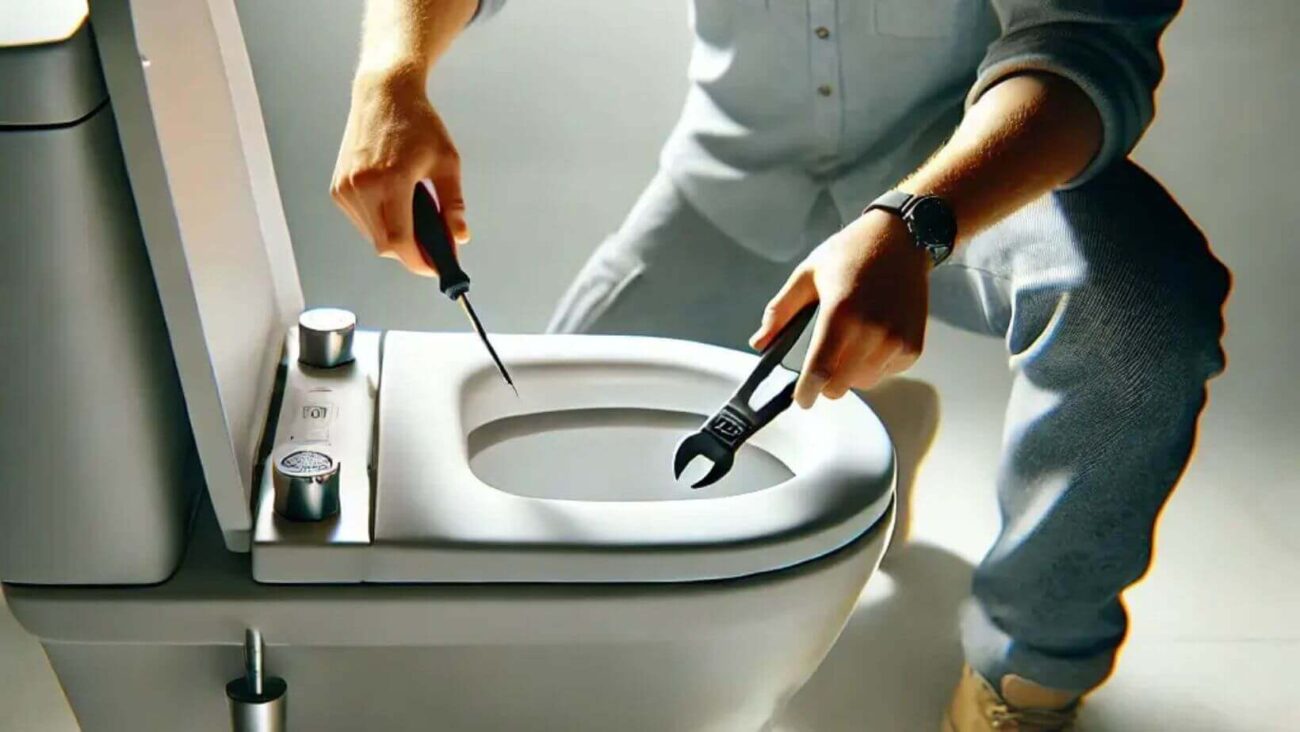Step by Step Guide on How to Remove a Bidet Toilet Seat
-
Posted by
tawheedhossenimon

Bidet toilet seats are growing in popularity, thanks to their comfort, hygiene, and high-tech features. Whether it’s for maintenance, repair, or replacement, knowing how to remove a bidet toilet seat properly is key to not damaging the seat or the toilet itself. Fortunately, a bidet toilet seat can be removed easily in most cases using just a few common tools, so the average homeowner should be able to do it without issue.
In this guide, we take you step-by-step through safely and efficiently removing a bidet toilet seat. So whether you are ready to upgrade to that shiny new model like the JO-KL9 Luxury Smart Floor Mounted Toilet Bidet, you are doing some maintenance on your current model, or just replacing it — follow this step-by-step process to make sure the job is done right!
Bidet Toilet Seats Are Relatively New Household Products
A bidet toilet seat is a great way to upgrade any modern bathroom with a high-tech touch, with various features like heated seats, adjustable water pressure, warm-water cleansing, air drying, and more. From products like the HA-11KA Smart Toilet to the NAP-22KA, they can show you the utmost in comfort with voice control, fresh air filtration systems, and bidet wash options. While these luxury bidets guarantee superior hygiene and comfort, with the needs of removal or replacement, their proper removal is of great significance to avoiding damage.
Things You Need and Tools You Need
Before removing your bidet toilet seat, be sure you have the following tools and materials available:
-
- The socket (or adjustable) wrench
-
- Screwdrivers (Flathead or Phillips)
-
- Towel or Bucket (to catch any water and to avoid dollops on your floor)
-
- Pliers (optional, for breaking free tight connections)
-
- Gloves (optional, but it can be good for your hygiene and protection)
-
- Manual (to know if you need to know specific details for some models)
Step 1: Shut Off Water Supply
It is important to turn off the water supply before removing the bidet toilet seat so water cannot flow out accidentally.
-
- Find the water valve: Usually the water supply valve (closer to the wall near the base of the toilet).
-
- Shut the water off: Turn the valve clockwise to disable the water supply to the bidet and toilet.
-
- Flush the toilet: Once the water is turned off, flush the toilet to empty the tank and relieve water pressure. This will help prevent any potential water spillage when you disconnect the bidet’s water connection.
Step 2: Disconnect the Water Supply Hose
-
- Find the hose connection: The hose that connects the water to the bidet is usually attached to the bidet’s T-valve or directly into the toilet’s fill valve.
-
- Loosen the connection: Turn the nut that connects the water hose to the bidet’s T-valve or to the toilet’s fill valve counterclockwise to loosen it, using an adjustable wrench.
-
- Drain out any excess water: Once the hose is disconnected, dangle the hose over a towel or bucket to allow any excess water that was left in the line to drain.
Step 3 — Uninstalling the Bidet Seat from the Toilet
With the water supply shut off, the next order of business is to detach the bidet seat from the toilet. Most bidet seats are attached with screws and are easy to remove.
-
- Find the bent bolts: The bidet seat is usually secured to the toilet bowl using bent screws at the rear of your seat. These are typically hidden behind small plastic covers.
-
- Pry off the plastic covers: Use a flathead screwdriver to pop off the plastic covers that conceal the mounting bolts.
-
- Unscrew the bolts: Use a Phillips screwdriver (or adjustable wrench, depending on screw type) to unscrew the bolts securing the bidet seat to the toilet. If the bolts are on too tight, grab some pliers to help loosen them.
-
- Remove the bidet seat: Once you remove the bolts, carefully lift up the bidet seat from the toilet. Differences depend on the model, but the seat either slides off or lifts straight up.
Step 4: Remove Electrical Connections
If your Toilet Bidet Seat has electrical functions like a heated seat, remote control, or air dryer, you will need to unplug the power supply.
-
- Find power cord: Usually the power cord is connected at the bidet’s control panel or remote control.
-
- Disconnect power cord: Carefully unplug the power cord from the mains power outlet. If your model is hardwired into the wall, you may need to remove the screws and disconnect the wiring.
-
- Look for additional connections: Some bidet seats may also have extra connections for sensors, water heaters, or other smart functions. Check that all electronic and sensor cables are absolutely disconnected.
Step 5: Disconnect the T-Valve (If Required)
Some bidet toilet seats work with the use of a T-valve to separate the water supply from the toilet and into the bidet. You also need to remove this if your model has it.
-
- Loosen the T-valve: Using your adjustable wrench, unscrew the T-valve from the water supply line to your toilet. Be sure to unscrew it carefully, and remove the valve.
-
- Remove the bidet hose: If you have been using the T-valve with a bidet hose, use your wrench to unscrew and remove that hose.
Step 6: Clean and Inspect the Area
-
- Dry the toilet area: Wipe the toilet and surrounding area so there’s no water left.
-
- Look for the hand of connectivity: Look at the water supply line and T-valve (if relevant) to check for indications of wear or abuse. This is also a good opportunity to replace any worn or damaged parts, like washers or gaskets.
Step 7: Reinstall or Install New Bidet Toilet Seat
After you’ve removed the bidet toilet seat, you can either reinstall it or put a new one in. If you’re installing a new bidet toilet seat, just follow your specific model’s manufacturer instructions.
-
- Secure the mounting bolts: If it is the same bidet being reinstalled, line up the mounting bolts through the holes of a toilet seat and tighten those bolts.
-
- Reattach the water supply hose: Reconnect the water supply hose to the T-valve or toilet fill valve.
-
- Reconnect electrical connections: If there is a power cord, connect it to the power source.
-
- Activate the water supply: Open the water valve by twisting it left, and inspect for any leaks around the joints.
-
- Reconnect the bidet: After everything has been installed and plugged back in, flush your toilet and make sure your bidet functions properly.

Reasons for Removing a Bidet Toilet Seat
Here are some common reasons to remove a bidet toilet seat:
-
- Upgrade to newer models: If you want to enjoy voice control, heated seats, advanced filtration systems, etc., upgrade to newer models like JO-KL9 Luxury Smart Floor Mounted Toilet Bidet.
-
- Maintenance and repairs: Taking off the bidet can help grant you access to the parts for cleaning, maintenance, or replacement.
-
- Replacing parts: If any of the bidet’s parts are worn out (the T-valve, hoses, seat, besides the pedestal), the first step in replacing those parts is removing the seat.
-
- Bathroom renovations or moving: If you are renovating your bathroom or moving to a new house, you will need to remove the bidet to be transported or to have the plumbing configured to it.
Conclusion
Taking out a bidet toilet seat is a straightforward task that only needs basic tools and a bit of time. This guide covers how to properly uninstall a bidet toilet seat. Whether you’re updating to a newer model such as the JO-17EL Smart Bidet Toilet or carrying out maintenance on your own seat, these steps ensure that the removal is as safe and smooth as possible. If this is the case, you can remove your bidet toilet seat using the method below so you can either install a new model or give it a good clean and keep using it.
FAQs
-
- How can I tell if my bidet toilet seat is installed properly?
Ensure the seat is secure with bolts, batteries, and water connections. Check that bidet functions work to make sure everything is correct.
- How can I tell if my bidet toilet seat is installed properly?
-
- Can I install the bidet toilet seat myself?
Yes, bidet toilet seat removal is a DIY project that most people can do in their own home with just a few basic tools. If you are in doubt, always check with the manufacturer’s instructions or call in a professional.
- Can I install the bidet toilet seat myself?
-
- Do I need to turn off the water when removing a bidet toilet seat?
Yes, you need to shut off the water supply to prevent any leaks or water spillage while you are removing the faucet.
- Do I need to turn off the water when removing a bidet toilet seat?
-
- How to avoid leaks while reinstalling my bidet?
Check that all hooks are well tightened and that the T-valve and hoses are in good condition. If necessary, apply plumber’s tape to the fittings.
- How to avoid leaks while reinstalling my bidet?
-
- Is it safe to unplug the electronics from the bidet?
Yes, provided the electrical connections are not disconnected until the power is turned off. If in doubt, get the user manual or hire a professional.
- Is it safe to unplug the electronics from the bidet?
